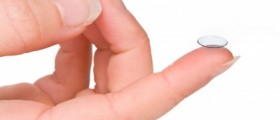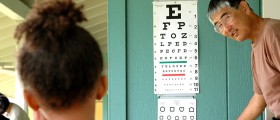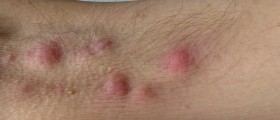
Keratoconus is a progressive disorder of the eye that features with degeneration of cornea. Cornea's structure is changed so it starts to resemble cone actually its shape becomes more conical. The condition leads to variety of symptoms connected to vision. They include deformities in vision increased sensitivity to light but in most cases disease starts with astigmatism and myopia. If this process affects both eyes simultaneously one may have great difficulties in reading. It can even interfere in driving abilities of a person. The course of the disease cannot be predicted. However in later stages almost all of the patients have to undergo surgical procedures in order to restore normal vision.
The disease may develop on its own or it can be present together with variety of other diseases such as retinitis pigmentosa, keratoconjuctivitis and Leber congenital amaurosis. People with Down's syndrome frequently suffers from keratoconus. Both genders are affected equally. As for age keratoconus mainly occurs in puberty and the progress of the disease can continue up until late 30s or 40s. Progression of the disease is more rapid in younger patients.
The treatment includes aids and in later stages even surgery is involved. In the beginning of the disease eyeglasses or even soft contact lenses may be used. Rigid lenses are cornerstone of the therapy. They are prescribed in mild to advanced stages of the disease. At one moment rigid lenses will not be efficient enough and one can replace them with hydrogel contact lenses or piggyback contact lenses. Even scleral or haptic contact lenses are available. Some patients cannot tolerate contact lenses and there are even patients who have developed allergies to them. The worst that can happen includes newly formed vessels in cornea, cornea abrasions so these patients eventually stop wearing contact lenses.
Surgical approach include so called shaving of the corneal surface. This procedure can lead to better tolerance of lenses and rule out the necessity for corneal transplantation. In mild forms of the disease there is another option. It includes intrastromal corneal rings. They are implanted and applied in those patients who have developed tolerance to contact lenses. Additional option is lamellar keratoplasty. Penetrating keratoplasty is a method applied in those patients whose vision have not been corrected greater than 20/40. The outcome of this surgical treatment is excellent and many patients do not require contact lenses any more. Still patients who have undergone this procedure have to be monitored for possible complications such as rejection and problems connected with wound are suture line. Still there is even possibility of recurrence of keratoconus in the graft.
This condition is not treated with any kind of medications. Drugs and ointment may be prescribed but only to help with additional problems such as eye allergies or itchiness.

















Your thoughts on this
Loading...